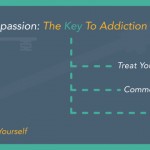To Begin Your Journey On A Successful Recovery Program
I'd rather send an emailBreaking the Cycle of Addiction through Family Intervention
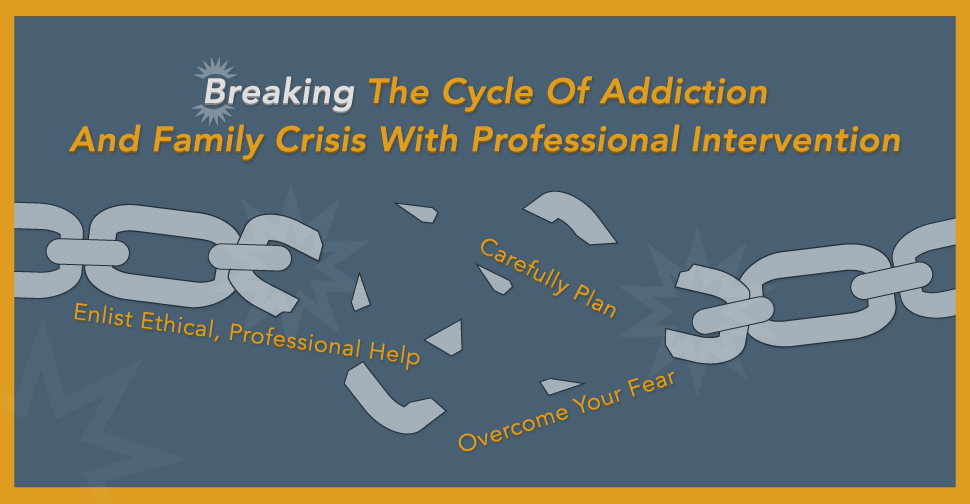
A mother is heavy with anxiety, worried that her son will suffer a drug overdose. She’s living with chronic hyper-stress — trying to shield her younger children, neighbors and friends from the chaos of addiction.
A husband feels like he’s walking on eggshells, wearily resigned to avoid another confrontation with his alcoholic wife.
Grandparents take on the role of primary caregivers — stepping in to save their grandchildren from a disheartening scene of illicit drug use, turmoil and neglect.
As millions of parents, siblings and others can attest — addiction is a family disease. Everyone is affected, or compromised when their needs come second to the impaired relative. Often, the entire family is held hostage by the crisis of a loved one’s drug or alcohol addiction.
A professional intervention can help restore the family’s well-being and in some cases, start lifesaving recovery for the addicted person.
“What many people don’t understand is that if they started the process of intervention sooner, they may not feel as exhausted in the end,” says Phil Scherer, Board Chair of the Association of Intervention Specialists, an international nonprofit network of board-registered interventionists. Scherer has conducted hundreds of family interventions since 1996 and is Director of the Illinois Institute for Addiction Recovery.
“Addiction wears people down, it’s not just the person suffering from the addiction but it wears down entire family systems.”
How Intervention Works
Contrary to voyeuristic TV portrayals, an ethical professional intervention doesn’t have to be an ambush, Scherer says. There’s no physical coercion — it’s more of a loving invitation to change. And family members are changing also, learning new ways to relate to addiction.
“You’re not going to berate or shame somebody into treatment,” Scherer says. “Addicts can do shame and negativity all day long.”
Scherer believes that people with substance abuse disorders are among the first to understand they have a problem. “They’re just the last to want to do anything about it,” he says, “because in their minds, it’s the only thing that gives them what they need to survive – even though it’s killing them.”
A Family-Centric Approach
Professionals use various models of intervention to motivate a loved one into treatment.
The original intervention protocol, the Johnson Model, does carry an element of surprise – as family members confront the addict directly about the damage the drinking or drug use has caused. Members of the addict’s social network state in clear terms the consequences that will happen if treatment is refused.
Many interventionists, including Scherer, prefer a more non-confrontational approach that puts the entire family in recovery.
These newer, family-centric methods include ARISE, the Systemic Family Model and the Community Reinforcement Approach and Family Training (CRAFT), an intervention that combines behavior therapy with family skills training to encourage a recovery path. Scherer and a colleague developed the Family Meeting Approach, which combines elements of all the intervention models.
“I approach the intervention from a family systems point of view,” Scherer says. “If I can change how the family engages the addiction, not so much the addict, I think almost all interventions are a success.”
The goal is to educate and empower families with options if the loved one refuses treatment – “so they don’t remain enslaved and exhausted by the addiction,” Scherer says.
“Nobody can fix the addict without the addict’s cooperation,” he adds, stressing that ultimately the impaired person must fully commit to recovery. “I can help provide information that empowers them to make different, healthier choices. The same holds true for the family.”
No Surprises, No Secrets
After careful intervention planning, the addicted loved one is notified of the family meeting in advance. Removing any manipulation or unwelcome surprise gives the person one less reason to resist, Scherer says.
He advises families to explain to their impaired relative that they’re changing the way they deal with the situation. The dialogue might be something like “we’ve engaged a person to talk to us about family problems.”
“I try not to use the word ‘interventionist,’ I try not to use the word ‘addiction,’” Scherer says. “Everybody at the meeting is going to have the opportunity to talk about family problems.”
The interventionist forms a team that may include caring family members, clergy and others concerned about a loved one’s substance use. They strategize on where and when to meet, and express their love to the addicted person in calm, nonjudgmental tones.
“It’s hard to push back against a group of people who care enough about you to risk losing your relationship by asking you to get help – so they don’t lose you to addiction,” Scherer says. He notes that a colleague refers to interventions as a “love fest” that motivates recovery.
Instead of needling the addicted person about drinking or drug use, Scherer encourages family members to champion the benefits of a clinical assessment. He recommends saying “Let’s go get an assessment from a professional to see if you have a drinking problem, let’s let them make the call.”
Changing Family Dynamics: Everyone Plays a Role
The addicted person is not the only one who must take action, Scherer says. All family members need to examine their roles in the family dysfunction and forge new relationships with their addicted loved one.
“They have to be willing to take a look at how they engage the person, they have to be willing to speak the truth and not be afraid of the pushback that’s going to happen,” he says. “They need to say, ‘Am I paying (the addicted person’s) bills, am I overlooking inappropriate behaviors, am I walking on eggshells, am I moralizing this disease?”
A vast majority of people with addictions get angry when confronted, Scherer says, and many people acquiesce. “It’s part of them being worn down by addiction.”
He teaches family members how to detach with love, establish boundaries and begin shaping new family dynamics.
“We talk about family strengths, we talk about family history because we want to take a look at what part the ancestors may have played in this family’s level of dysfunction,” Scherer says. “I ask people what they perceive to be the problems in the family and then we talk about solutions. Part of the solution is asking the person who has an addiction to seek help.”
An experienced interventionist is trained to recognize nonverbal signs of depression in a family member – and engage that person to determine any safety concerns. “There may be various problems going on that need attention, from depression to enabling to addiction to any number of things,” Scherer says. “It’s not just the person with the addiction who has to change.”
A professional interventionist is also skilled in overcoming manipulation and using techniques to calm a volatile meeting.
“One of things I do if a room starts to get loud is I start talking. But I talk more softly because I want people to hear what I have to say,” Scherer says. “My only rule when doing a family meeting is that people have to be respectful.”
Scherer says interventions can be life-changing for family members – even if the loved one battling addiction refuses to get treatment.
“In my practice, over 80 percent of the people go to get treatment and families are improved,” he says. In cases where there’s no progress made by the addicted relative, “the families feel better because they have different information, they feel a different level of responsibility. They see it more as the other person’s problem.”
“After they go through the intervention process, the vast majority of people say, ‘Wow, I’m not supposed to know how to fix this. It’s not my responsibility to know all the answers.’”
Intervention Tips For Families
Here are some guidelines for families considering a professional intervention to help an addicted loved one:
- Overcome your fear. A bold step may be necessary to save lives and overcome the ravages of addiction, Scherer says. “What keeps family members frozen is the fear that if they do something different, they’re going to lose the (addicted) person emotionally, or that they will distance themselves from the family,” he says. “I would ask them to take a look at what the probabilities are for the relationship if they don’t overcome their fear.”
- Enlist ethical, professional help. Don’t go it alone or trust an untrained person to orchestrate an intervention for your loved one, Scherer says. The results could strain the family even more and compromise any future recovery efforts. “If you’re being pressured, you’re probably talking to the wrong people,” he says.
Scherer recommends interviewing practitioners and finding a board-registered interventionist for multiple reasons: they’ve been formally trained in the art of professional intervention, hold a license or certification in a counseling-related field, have documented experience working in addiction recovery, with peer evaluations and supervised practicums, and must adhere to a code of ethics. In addition, a board-registered interventionist carries malpractice insurance and participates in continuing education programs to strengthen their skills. They are also typically trained in multiple intervention methods, and may have specialized training in gambling, food, sex or other addiction disorders.
- Take time to carefully plan. This is critical, since a poorly planned intervention rarely motivates a loved one toward recovery.
Some of the planning considerations include choosing a time for the meeting when the addicted loved one is sober; composing a team of non-threatening people who can remain calm during the intervention; rehearsing what to say about the addiction; having a plan to start rehabilitation immediately if the person agrees to get help; and establishing new family rules regarding the addiction. A relapse prevention plan, with actions that family members can take to support recovery, should also be part of effective intervention planning.
- Be prepared for anger and rejection. An intervention can unleash a rollercoaster of emotions, as the addicted loved one faces the family. Prepare to detach, with love, so that you can avoid enabling the addiction and create a healthier relationship with your impaired relative.
Sidebar Article:
Five Common Myths That Can Derail Recovery
False perceptions about drug and alcohol addiction can keep people from seeking effective treatment. Here are five consistent myths about substance abuse, from the Association of Intervention Specialists:
Myth 1: Overcoming addiction is a simply a matter of willpower. You can stop using drugs if you really want to.
Prolonged exposure to drugs alters the brain in ways that result in powerful cravings and a compulsion to use. These brain changes make it extremely difficult to quit by sheer force of will.
Myth 2: Addiction is a disease; there’s nothing you can do about it.
Most experts agree that addiction is a brain disease, but that doesn’t mean you’re a helpless victim. The brain changes associated with addiction can be treated and reversed through therapy, medication, exercise, and other treatments.
Myth 3: Addicts have to hit rock bottom before they can get better.
Recovery can begin at any point in the addiction process—and the earlier, the better. The longer drug abuse continues, the stronger the addiction becomes and the harder it is to treat. Don’t wait to intervene until the addict has lost it all.
Myth 4: You can’t force someone into treatment; they have to want help.
Treatment doesn’t have to be voluntary to be successful. People who are pressured into treatment by their family, employer, or the legal system are just as likely to benefit as those who choose to enter treatment on their own. As they sober up and their thinking clears, many formerly resistant addicts decide they want to change.
Myth 5: Treatment didn’t work before, so there’s no point trying again.
Recovery from drug addiction is a long process that often involves setbacks. Relapse doesn’t mean that treatment has failed or that you’re a lost cause. Rather, it’s a signal to get back on track, either by going back to treatment or adjusting the treatment approach.
For More Information Related to “Breaking the Cycle of Addiction through Family Intervention” Be Sure To Check Out These Additional Resources From DrugRehab.org:
- The Effect Of Addiction On The Family
- Addiction In The Family And Rehabilitation Programs
- Loving an Addict: Resources to Help Families and Friends Weather
- 5 Signs You Are Enabling A Family Member’s Drug Addiction
- The Benefits Of Family Counseling In Addiction Treatment

Champion of Second Chances


In Heroin’s Wake


Angels of Addiction


A Staggering Loss: “If Only”
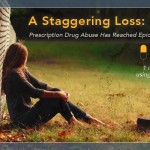

Addiction to Methamphetamine: Signs of Abuse, Health Risks, and How to Get Help
 Dr. Richard A. Rawson, Ph.D.
Dr. Richard A. Rawson, Ph.D. 
Breaking the Cycle of Addiction through Family Intervention
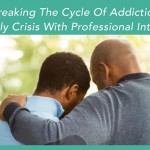

Life in Recovery: Better on All Counts
 Alexandre B. Laudet, Ph.D
Alexandre B. Laudet, Ph.D 
Computer-Based Training for Cognitive Behavioral Therapy – CBT4CBT
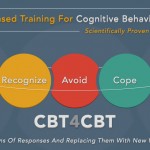

Self-Compassion: The Key To Addiction Recovery
